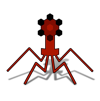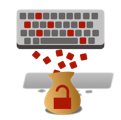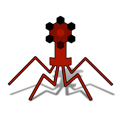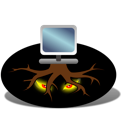
THE ADVENTURES OF BILLY
Comprehensible Information Security…




Malware refers to software designed with malicious intent. This can be to gain unauthorised access to computers or other connected devices to disrupt their normal operation, obtain sensitive information, spy on computers, etc... The software is specifically programmed to be stealthy, so it can stay on the victim system for long periods of time without the user knowing. This if often done by disguising the malware as a clean program.
The effect of malware can be harmful to users but devastating for companies. If spread through a network it can cause widespread damage and disruption, potentially compromising countless sensitive customer records.


Designed to record information about your activity on a device. It can take screenshots and log your keystrokes enabling the attacker to collect personal information you've input into the device such as usernames and passwords to your accounts.

A trojan is a malicious program that misrepresents itself to appear useful. These are spread in the guise of routine software that persuade a victim to install it on their PC. The term is derived from the Ancient Greek story of the wooden horse that was used to invade the city of Troy by stealth - Trojan horses are just as deadly on computers.

Software & devices that record all the information that is typed using a keyboard. Keyloggers usually are not capable of recording information that is entered using virtual keyboards and other input devices, but physical keyboards are at risk with this type of malware. Keyloggers store the gathered information and send it to the attacker, who can then extract sensitive information like username and passwords as well as credit card details.

The primary characteristic that a piece of software must possess to qualify as a virus is an urge to reproduce that is programmed into it. This mechanism means that this type of malware will distribute copies of itself, using any means to spread.
Another characteristic common to viruses is that they are covert, making it hard to detect their presence on a system, without dedicated security programs called antivirus. Essentially, they arrive uninvited, hide in secrecy and usually work in obscurity. And that is what makes them so deadly.

A rootkit is a collection of software specifically designed to permit malware that gathers information, into your system. These work in the background so that a user may not notice anything suspicious. But in the background, a rootkit will permit several types of malware to get into the system.

A worm is a standalone software that replicates without targeting and infecting specific files that are already present on a computer. Think of worms as small programs that replicate themselves in a computer and destroy the files and data on it. They usually target the operating system files, and work until the drive they are in becomes empty.

Ransomware blocks access to the data of a victim, threating to either publish it or delete it until a ransom is paid. Worse yet, there is no guarantee that paying a ransom will return access to the data, or prevent it from deletion. This type of malware basically infects the system from the inside, locking the computer and making it useless.

Malicious adware usually shows ads in the form of popups and windows that cannot be closed. It is the perhaps the most lucrative and least harmful malware, designed with the specific purpose of displaying ads on your computer. Adware usage is on the rise in mobile devices, in particular, with some Chinese firms bundling in adware by default in certain low-cost Android smartphones.